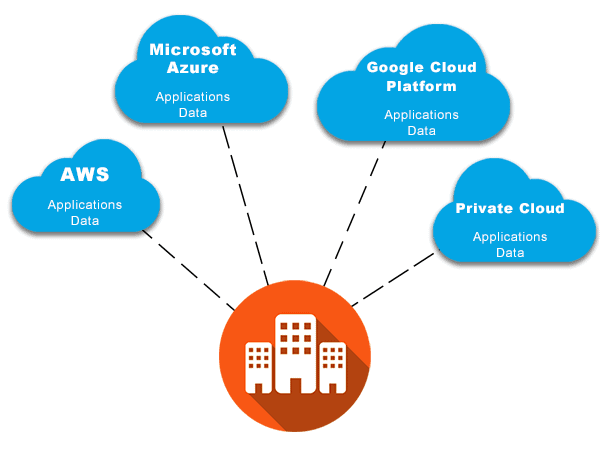Get real value out of multicloud environments by adopting DevSecOps
Gaining control over your multicloud environments requires a transformation of your organization’s people, processes, and tools. It is a transformation of teams and roles where silos across Development, Security, and Operations are broken down.
People need to transform their processes and move towards Infrastructure as Code and have a culture of immutability of cloud resources, and they need focus on automating everything. They need tools that give an end-to-end view of the hybrid multicloud environment and that manage the lifecycle of applications, resources, and configuration and security compliance instead of the point products they are currently using.
These changes make the management more scalable and deterministic, and they reduce configuration and security errors. These changes are essential to get real value out of multicloud environments.
What to look for in a multicloud management tool
First, your tool needs to have complete and consistent visibility across your environment. You need a tool that shows all the resources (such as Kubernetes clusters, virtual machines, storage, and networks) that are used across your private clouds, public clouds, and traditional deployments in a single source of truth. It must include the deployed applications across these environments.
Your multicloud management tool should also provide other attributes that are associated with your resources, such as status and performance. Does it tell you whether a resource is up or down, and if it is performing okay?
It must also include the configuration settings management. The tool should also give you visibility of your environment’s compliance with your enterprise’s policies or any of your regulatory needs. Ownership information is required so that someone can contact the owner in case of security problems and charge-back. This single source of truth becomes the center point for teams to collaborate to manage your environment.
Next, you need to make sure that these multicloud environment configurations are managed using configuration and deployment policies. Traditionally, operations teams manually configured new resources or used some basic scripts. This manual operation is not a scalable method. The new way to manage is by using the techniques of Infrastructure as Code and automated policies that configure resources for a purpose like development, production, or quality assurance. These automated policies allow the operations team to scale to managing a larger number of systems and the process to be repeatable. An ideal multicloud management tool allows the same policies to configure the resources across multiple clouds.
The application deployment process must be automated and policy-driven so that the applications are not deployed on a cloud infrastructure that does not comply with company policy for cost or security. Application developers need to have visibility in to the performance of their applications wherever they are running so that they can truly optimize the performance. So, the performance management tool needs to be multicloud. It is impossible to piece together an end-to-end performance view with multiple tools that each look at the separate parts of the infrastructure.
The last part is an integrated Site Reliability Engineering (SRE) tooling framework that brings together all of the inventory, alerts and events, and debugging tools. When there is a problem with a production application, the correct teams are notified, they can look at the environment holistically, and they can recover service as soon as possible.
What your organization can do to make a multicloud environment more manageable
Collaboration across teams, especially Development, Security, and Operations teams, is essential to making your organization agile and responsive to changing market needs. This new process is called DevSecOps, where there is a collaborative process in place. To get this collaboration started, your teams need to agree on the facts and use a single source of truth. The integrated tooling needed to bring together the resources, the configuration, and the application view creates that new framework for the teams and processes to come together.
The transformation of operations teams into SRE teams that include members from Development, Security, and Operations also changes incentives to ensure that service restoration is the primary priority and problems are addressed earlier in the process (Shift-Left).
The biggest multicloud management mistake to avoid
Standardization of the runtime platforms and core services in multicloud environments are key to reducing complexity. Most organizations don’t spend enough time up front to pick the correct runtime platforms that provide portability of applications and management across their multicloud environment. This makes their problems much harder and they spend a lot of time having to manage the differences in the platforms and tools in various clouds. It also results in fragmented teams due to the broader skills needed.
Kubernetes is the de-facto platform that is leading the way here. Teams should pick an enterprise-scalable and secure version of Kubernetes to ensure that the mission critical applications are running securely and performing well.
Summary
Cloud-native runtimes such as Kubernetes, and the tools and process changes that come with it, are essential to the transformation of an organization to cloud and multicloud. The earlier your organization starts using this, the faster you will transform.
One such multicloud management tool to consider is IBM Cloud Pak for Multicloud Management. Learn more in this article about using IBM Cloud Pak for Multicloud Management to prevent multicloud mayhem.
For details check here

